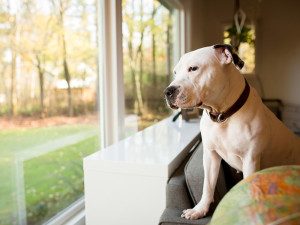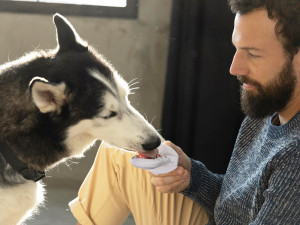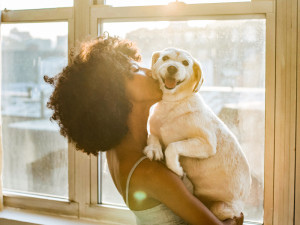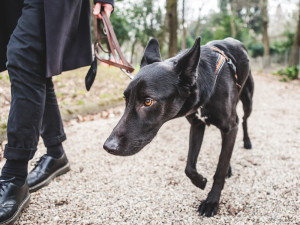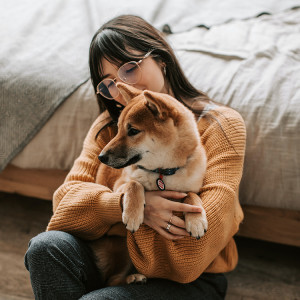Long-Lasting Chew Toys Are Key to Keeping Solo Dogs Happy
New research shows that chewing (toys, not shoes) reduces stress in dogs left home alone.
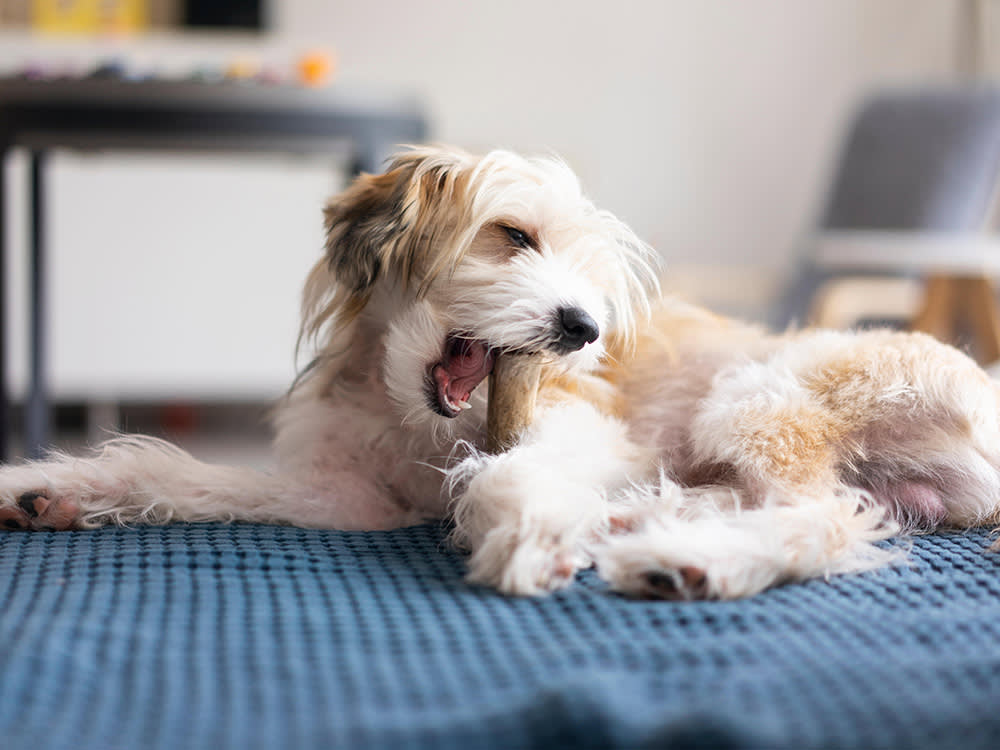
share article

Your pet wants you to read our newsletter. (Then give them a treat.)
We all worry about leaving our dogs alone, even for short periods of isolation. We want to do what is best for them so they can be happy when we must leave them (to earn money to buy them things, for example!). Sure, there’s a part of us that knows the best way to keep them happy is simply to skip our obligations and take them out for a run or a hikeopens in a new tab or to hang out at home and play in the yard.
But what is the best way to keep them happy when we absolutely do have to head out without them, and they do have to stay alone? Plan A — never leaving our dogs — has great appeal, but a Plan B is essential. Recent research has found that long-lasting chew toys are a great way to keep pups busy when they they have to do some solo time at home.
Long-lasting chews are a dog’s best friend, too
In a study published in Februaryopens in a new tab, dogs stayed engaged with a long-lasting chew toy opens in a new tabfor longer than they stayed engaged with the other enrichment options. They also exhibited less stress and more positive emotions when they had a long-lasting chew, compared with when they were offered the other options.
Long-lasting chews were the most effective way to keep dogs engaged and in more positive emotional states with less stress than the other options in the study. The long-lasting chews were better than toys with food and automatically dispensed food, plus a voice from a person talking to them in a happy way.
Chew toys, food toys and automatic, food-dispensing toys
The study investigated the effects of different food-based enrichment options for dogs who were left alone to determine which kept them occupied for the longest time. The study also assessed which options keep dogs in the happiest state of mind so those alone times do not have to be so sad or stressful.
The researchers attempted to keep dogs happy by offering them a long-lasting chew, a Kong wobbler with kibble in it, and an automatic food-dispensing toy with kibble. The automatic food-dispensing toy was used in two ways: accompanied by a person’s voice and without a person’s voice.
A treat was delivered once a minute, whether or not there was a person talking to the dog. The voice was always a woman speaking in a high-pitched happy voice. She spoke before each treat was delivered, saying things like, “Hello, Max, are you being a good boy? Would you like a treat?” and “Guess what, I’ve got some more treats for you! Coming your way now!”
The experience of the dogs in the study
Researchers recorded video of 10 Labrador Retrievers and 10 Petit Basset Griffon Vendéens for 20 minutes with each of the enrichment options. The dogs in the study were each left alone four times so every dog had the opportunity to try all four of the options for enrichment in isolation. Experts watched the videos and recorded the emotional state of the dog throughout the experiment and the amount of time they stayed interested in the food or chew.
Future research
Dogs tend to like food and chew toys, but they don’t typically like being left alone, so exploring how to use the former to help make the latter easier is worth your while. Much more research needs to be done, though. I would like to know how long-lasting chews compare with a toy stuffed with really high-quality food such as chicken, steak, or peanut butter, instead of kibble for helping keep dogs happy when they are alone. I also want to know which long-lasting chews make dogs the happiest and keep them occupied when they must be alone.
It’s an exciting time to be a dog (and to have a dog) because scientists are studying what makes them happy and what we can do to keep their quality of life high. We don’t like leaving our dogs, but it’s a little easier when science lets us know what to do in that situation for the benefit of our dogs.

Karen B. London, PhD, CAAB, CPDT-KA
Karen B. London, Ph.D., is a Certified Applied Animal Behaviorist and Certified Professional Dog Trainer who specializes in working with dogs with serious behavioral issues, including aggression, and has also trained other animals including cats, birds, snakes, and insects. She writes the animal column for the Arizona Daily Sun and is an Adjunct Professor in the Department of Biological Sciences at Northern Arizona University. She is the author of six books about training and behavior, including her most recent, Treat Everyone Like a Dog: How a Dog Trainer’s World View Can Improve Your Lifeopens in a new tab.
Related articles
![white cat having dry food added to its feeder]() opens in a new tab
opens in a new tab7 Automatic Pet Feeders That Will Make Every Meal an Event
Go ahead, make your morning routine a little easier.
![African American man with braids sitting on his bed using his computer with his dog next to him also looking at the computer]() opens in a new tab
opens in a new tabThere’s a High-Tech Training Solution For Your Dog’s Separation Anxiety
Like most things in 2023, there’s a Zoom link for this.
![A bearded man in a gray sweater and yellow pants sitting on the floor and holding a Groov Training Aid in "lilac" from Diggs Pet, which is like a grooved plastic popsicle with treats smeared in, while his Husky dog licks it]() opens in a new tab
opens in a new tab9 Stress Toys For Dogs That Are Cheaper Than Therapy
The toys that’ll help your pup chill out after a long day of being a dog.
![Woman holding her dog beside a window in bright morning light]() opens in a new tab
opens in a new tabPet Parents Get Separation Anxiety, Too
We asked both animal behaviorists and human psychologists how you can deal with leaving your dog home alone.
![Shy black dog walking with owner at the park.]() opens in a new tab
opens in a new tabHow to Help an Anxious Dog Conquer Their Fears
Six animal behaviorists and I share our pro tips for boosting the confidence of a fearful dog.
![A woman wearing a knit sweater holding a dog close on the floor of her bedroom.]() opens in a new tab
opens in a new tabSeparation Anxiety in Dogs
Train your dog to stay calm when they’re on their own — instead of sad-singing “All By Myself” until you come home.
